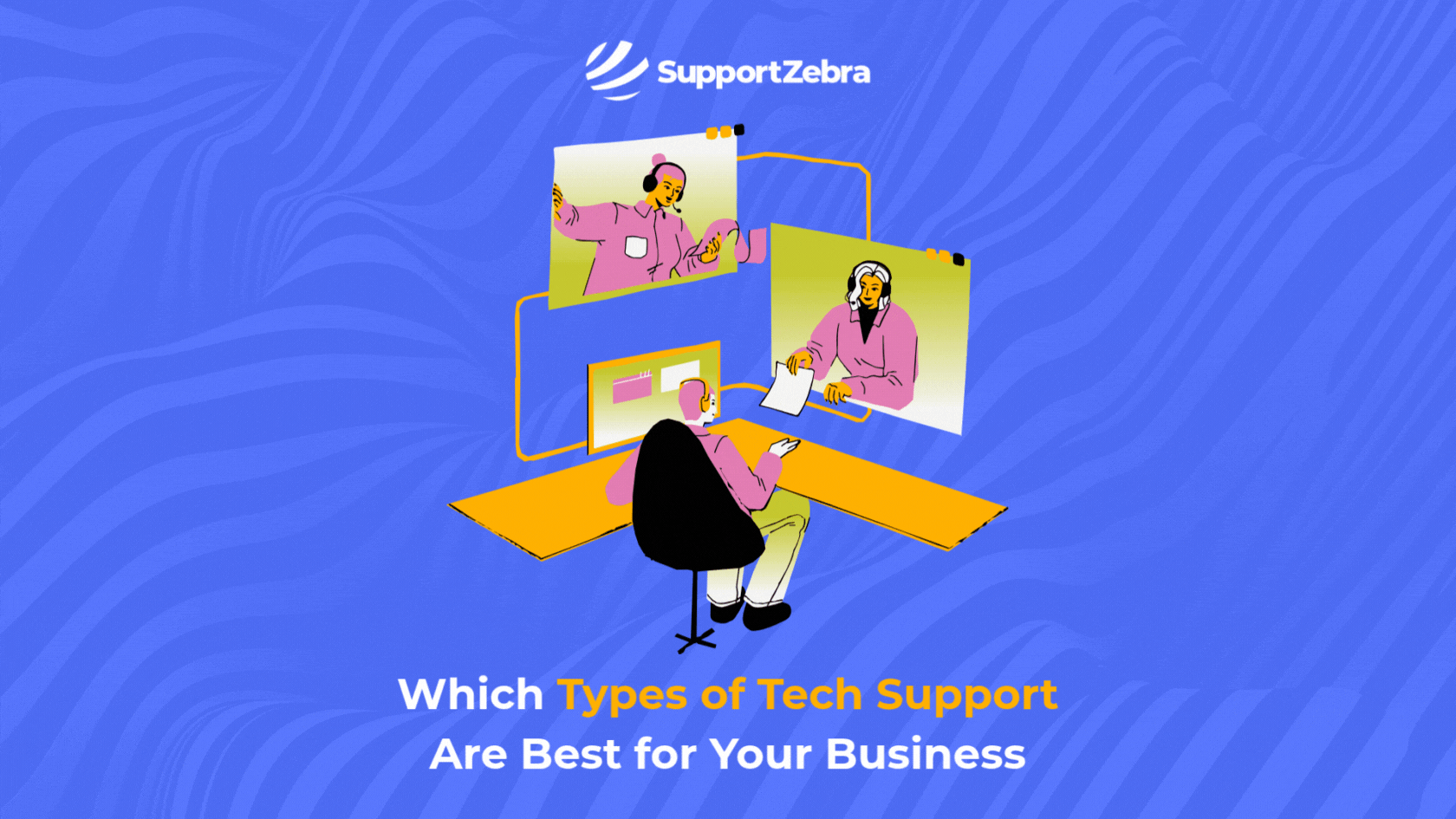A Guide to the Best Types of Tech Support for Businesses
Key Takeaways:
- Not all tech support is the same. Each tier handles different levels of problems, from basic fixes to complex system issues.
- Pre-support helps prevent problems before they happen, saving time, money, and frustration.
- A mix of support levels, from Tier 1 to Tier 4, keeps your business running smoothly and your team focused.
- Choosing the right support structure now can protect your business from costly downtime and slow growth in the future.
Tech problems can slow down your team and upset your customers. Selecting the correct type of support enables your business to run more efficiently. But not all tech support is the same. Some help before problems even start. Others address significant issues that can take hours or days to resolve.
This guide breaks it down. We’ll help you understand the types of tech support, from pre-support to tier 4, so you can pick the right one for your team.
What Is Pre-Support and Why Should You Care?

Pre-support happens before anything breaks. It’s about stopping problems before they start. Many businesses skip this step, but it can save you time, money, and stress in the long run.
Pre-support includes:
- Setting up systems the right way from the start
- Regular updates and patches
- User guides and self-help tools
- Training for staff on how to use tech tools properly
If you ignore pre-support, you might face:
- More system crashes
- Slower help when something goes wrong
- Frustrated staff who don’t know how to fix things
This type of support is ideal for growing teams that rely heavily on technology every day. If you want fewer issues down the line, pre-support is a smart place to begin.
What Is Tier 1 Tech Support and Who Needs It?
Tier 1 is your front-line support. These are the people who answer first when you call, email, or use live chat. They solve basic problems and handle common questions.
Tier 1 tech support usually covers:
- Password resets
- Basic setup help
- Software or hardware troubleshooting
- Simple how-to questions
Here’s why Tier 1 is useful:
- It’s fast and easy to access
- It filters out minor issues so your main team stays focused
- It’s often available 24/7, which helps businesses with customers around the world
Tier 1 is a must for:
- Customer-facing businesses
- Companies with many users or devices
- Teams that want quick answers without long delays
When Tier 1 can’t solve the problem, they pass it on to the next level.
What Makes Tier 2 Support Different from Tier 1?
Tier 2 goes deeper. These support staff members receive more training and often have greater access to tools and systems. They handle the problems that Tier 1 can’t fix.
Tier 2 support helps with:
- Bugs that need extra testing
- Issues with custom software or tools
- Connecting with outside vendors or services
- More advanced setups or network problems
If your business uses specialized software or if your team frequently encounters complex issues, Tier 2 can be a lifesaver. They may take longer to respond than Tier 1, but they’re trained to dig deeper.
Tier 2 is best for:
- Businesses with custom setups
- Companies using advanced tech tools
- Teams that often need more than just quick fixes
When Do You Need Tier 3 Support?
Tier 3 support is for complex, high-level issues. These tech experts often work with the people who built your tools—like developers or engineers. Tier 3 is helpful when no one else can resolve the issue.
Tier 3 might handle:
- Major bugs or system failures
- Deep system code problems
- Product defects that need fixes from the manufacturer
- Long-term upgrades and redesigns
This kind of help often involves:
- Advanced troubleshooting
- Code analysis
- Testing new fixes before releasing them
Tier 3 is not always necessary on a day-to-day basis. However, when you encounter a major problem, it’s reassuring to know that this kind of support is available.
Tier 3 support is ideal for:
- Tech-heavy businesses
- Teams that rely on unique platforms or tools
- Situations where downtime costs a lot of money
What Does Tier 4 Tech Support Do?
Tier 4 isn’t always part of every support team, but it’s important to understand. This level involves outside vendors, hardware makers, or third-party providers. You only reach this level when all other support tiers can’t help.
Tier 4 support may include:
- Hardware replacement from your device vendor
- Fixes or patches from software developers
- Support from cloud providers like AWS, Google Cloud, or Microsoft
Tier 4 helps with:
- Issues that are out of your hands
- Things that need a fix from the original maker
- Warranty or contract support services
You don’t control Tier 4—but you rely on it when your tech depends on someone else’s product or service.
This support is crucial if:
- Your business depends on outside software or cloud tools
- You use licensed products that only vendors can fix
- You work with tools or systems you can’t change or update yourself
How Can You Choose the Right Level of Support?
Choosing the right tech support isn’t just about price. It’s about how much help your team really needs.
Here’s how to decide:
Go for pre-support if:
- You want to avoid issues before they start
- You need your team trained and ready
- You value long-term savings over short-term fixes
Use Tier 1 if:
- You have many users or customers
- You need fast, basic help often
- You want to keep your team focused on core work
Add Tier 2 if:
- Your business runs on advanced tools
- You often hit tricky issues Tier 1 can’t solve
- You want stronger internal support without hiring more staff
Use Tier 3 if:
- You need experts to solve challenging tech problems
- You use custom-built tools or platforms
- You face risks from long outages
Rely on Tier 4 if:
- You use outside vendors and can’t fix specific issues yourself
- You depend on cloud, SaaS, or third-party systems
- You want peace of mind if things break beyond your team’s reach
Can One Business Use More Than One Type of Support?

Yes, and most should. Many companies utilize a combination of pre-support, Tier 1, Tier 2, and Tier 3 support. Larger businesses or tech companies may also utilize Tier 4 for external assistance.
Here’s a sample setup:
- Pre-support: for training, system checks, and setup
- Tier 1: to handle daily questions and quick fixes
- Tier 2: for trickier, recurring issues
- Tier 3: on standby for major outages or system bugs
- Tier 4: used when vendor support is needed
Mixing support types keeps your team focused and your tools running smoothly. You don’t have to do it all in-house, either. Many companies outsource one or more of these tiers to expert partners.
What Happens If You Don’t Have Enough Support?
Without the right tech support, you may face:
- More downtime and missed deadlines
- Lost customers or unhappy users
- Burned-out staff trying to solve issues alone
- Slower business growth due to poor tools or systems
The longer you wait to fix your support gaps, the harder it is to catch up. Don’t wait for things to break. Establish a support plan that scales with your business.
How Can SupportZebra Help With Your Tech Support Needs?
At SupportZebra, we help you establish a tech support setup tailored to your business needs. Whether you need Tier 1 support to manage customer issues or advanced help for technical bugs, we’ve got you covered. We offer flexible plans, real-time agents, and skilled support teams trained to fit your tools and workflows.
Need to stop the tech chaos and get back on track? Let’s talk about what kind of support makes the most sense for your business.

